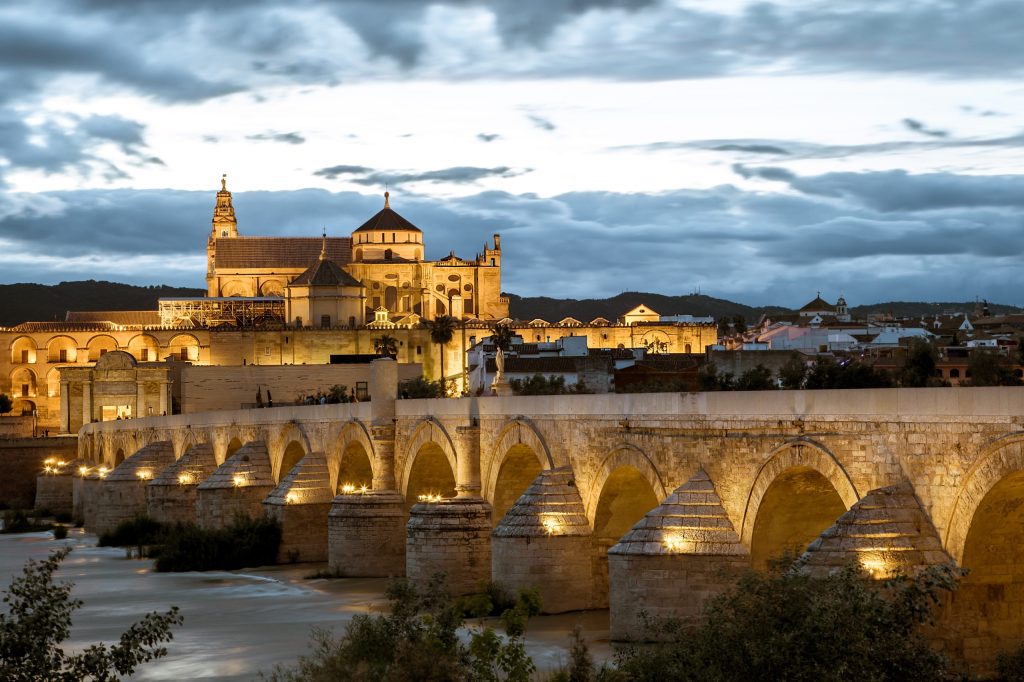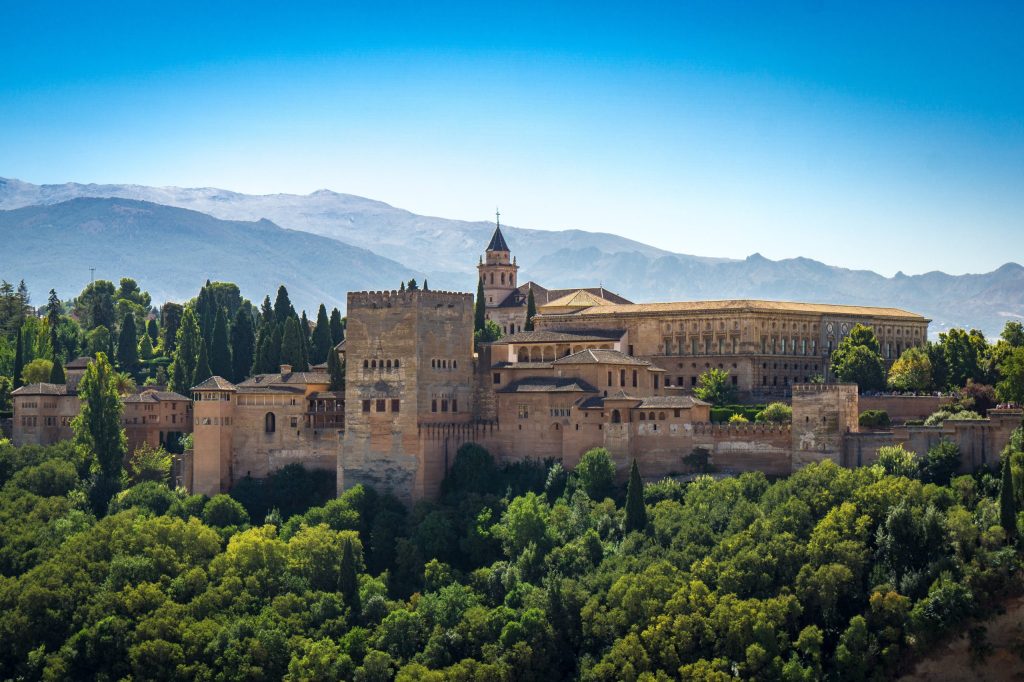Day 1: Arrive in Seville, the capital of Andalusia and a city full of history, culture and charm. Check in at the Hotel Alfonso XIII, one of the most prestigious and luxurious hotels in Spain, located in the heart of the historic centre. Relax in your elegant room or explore the hotel’s stunning courtyards, gardens and pool. In the evening, enjoy a welcome dinner at the hotel’s restaurant, which serves exquisite Andalusian cuisine with a modern twist.
Day 2: After breakfast, join a guided tour of the Alcazar, the royal palace of Seville that dates back to the 10th century. Marvel at the fusion of Islamic, Gothic and Renaissance styles, as well as the beautiful gardens and fountains. Learn about the history and legends of this UNESCO World Heritage Site, which was once the residence of Moorish kings and later of Christian monarchs. After the tour, have lunch at one of the nearby restaurants or cafes, then visit the Cathedral, the largest Gothic church in the world and the burial place of Christopher Columbus. Climb up to the Giralda, the iconic bell tower that was once a minaret, and enjoy a panoramic view of the city. In the evening, experience the passion and artistry of flamenco at a show at Tablao El Arenal, one of the most renowned venues in Seville.
Day 3: Today, you have a full day to explore Seville at your own pace. You can wander around the Santa Cruz quarter, the old Jewish neighbourhood with narrow streets, whitewashed houses and flower-filled balconies; or shop for souvenirs at La Alcaicería, the former Moorish silk market. You can also visit some of the city’s museums and galleries, such as Museo de Bellas Artes, which displays works by local artists; or Centro Andaluz de Arte Contemporáneo, which showcases modern art in a former monastery. For lunch, try some of the local specialties, such as gazpacho, salmorejo, jamón ibérico or tortilla de patatas. In the afternoon, you can relax at your hotel or join an optional activity, such as a cooking class, a wine tasting or a bike tour. For dinner, you can choose from a variety of restaurants and bars in Seville, or join a tapas tour to sample some of the best bites in town.

Cordoba, Spain
Day 4: After breakfast, check out from your hotel and take a train to Cordoba, about an hour away. Check in at Hospes Palacio del Bailio, a five-star hotel set in a restored 16th-century palace with a spa and a pool. After settling in, join a guided tour of Cordoba’s main attraction: the Mosque-Cathedral, also known as La Mezquita. This stunning building is a masterpiece of Islamic architecture, with hundreds of arches, columns and domes. It also houses a Christian cathedral that was built inside after the Reconquista. Learn about the history and symbolism of this unique monument, which reflects Cordoba’s multicultural past. After the tour, have lunch at one of the nearby restaurants or cafes, then explore Cordoba’s historic centre on foot. You can visit some of its other attractions, such as the Alcazar de los Reyes Cristianos, a medieval fortress with beautiful gardens; or the Judería, the old Jewish quarter with its synagogue and souvenir shops. You can also admire some of Cordoba’s famous patios, and courtyards decorated with flowers and fountains. In the evening, enjoy dinner at your hotel’s restaurant or at one of Cordoba’s gastronomic gems.
Day 5: Today, you have another full day to discover Cordoba at your leisure. You can visit some of its lesser-known but equally fascinating attractions, such as Medina Azahara, an archaeological site that was once a lavish palace-city built by an ambitious caliph; or El Bañuelo, an ancient Arab bathhouse that has been preserved for centuries. You can also visit some of Cordoba’s museums, such as Museo de Bellas Artes Evita, which displays works by local artists; or Museo Julio Romero de Torres, which showcases paintings by one of Cordoba’s most famous sons. For lunch, you can try some more of Cordoba’s culinary delights, such as flamenquín (pork loin wrapped in ham and cheese), salmorejo (a thick tomato soup) or pastel cordobés (a pastry filled with sweet pumpkin). In the afternoon, you can relax at your hotel’s spa or join an optional activity, such as an Arabian baths experience, a flamenco show or a horse carriage ride. For dinner, you can choose from a variety of restaurants and bars in Cordoba, or join a wine and cheese tour to taste some of the region’s best products.
Day 6: After breakfast, check out from your hotel and take a train to Granada, about an hour and a half away. Check in at Parador de Granada, a four-star hotel located within the Alhambra complex, offering stunning views and exclusive access. After settling in, join a guided tour of the Alhambra, the magnificent Moorish palace complex that dominates the city skyline. Admire the intricate architecture, the lush gardens and the breathtaking views of the city and the mountains. Learn about the history and legends of this UNESCO World Heritage Site, which was once the residence of the Nasrid sultans and later a royal palace for the Catholic Monarchs. After the tour, have lunch at one of the nearby restaurants or cafes, then visit the Generalife, the summer palace and gardens of the Alhambra. Enjoy the tranquility and beauty of this place, which inspired many poets and writers. In the evening, enjoy dinner at your hotel’s restaurant or at one of Granada’s gastronomic gems.

Granada, Spain
Berkh
Day 7: Today, you have a full day to explore Granada at your own pace. You can visit some of the city’s other attractions, such as the Cathedral, a Renaissance masterpiece that houses the tombs of Ferdinand and Isabella; the Royal Chapel, where you can see their personal belongings and relics; or the Albaicín, the old Moorish quarter with its narrow streets, whitewashed houses and scenic viewpoints. You can also visit some of Granada’s museums and galleries, such as Museo de Bellas Artes, which displays works by local artists; or Centro José Guerrero, which showcases modern art by one of Granada’s most famous sons. For lunch, try some of the local specialties, such as habas con jamón (broad beans with ham), tortilla del Sacromonte (omelette with offal) or piononos (sweet pastries). In the afternoon, you can relax at your hotel or join an optional activity, such as a skiing trip to Sierra Nevada, a hiking trip to Los Cahorros or a paragliding trip over Granada.
Day 8: Take a day trip from Granada and explore some of the nearby towns and villages in Andalusia. You can visit Ronda, a picturesque town perched on a gorge with a famous bridge and bullring; or Antequera, a historic town with a Moorish fortress and dolmens. You can also visit Nerja, a coastal town with a beautiful beach and caves; or Frigiliana, a hilltop village with whitewashed houses and flower pots. Alternatively, you can visit Alpujarras, a mountainous region where you can see traditional villages and enjoy nature.
Day 9: Spend another day in Granada and discover some of its hidden gems. You can wander through the Realejo quarter, the old Jewish neighbourhood with graffiti art and tapas bars; or shop for souvenirs at Alcaicería, the former Moorish silk market. You can also visit some of Granada’s lesser-known attractions, such as La Cartuja Monastery, a Baroque masterpiece with lavish decorations; or Sacromonte Abbey, where you can see relics of St Cecilia and St James. In the evening, enjoy a farewell dinner at one of Granada’s best restaurants or join a night tour of the Alhambra to see it illuminated.
Day 10: After breakfast, check out from your hotel and take a train to Malaga, where you can catch your flight back home. Say goodbye to Andalusia and its wonderful cities, hoping to return soon.





